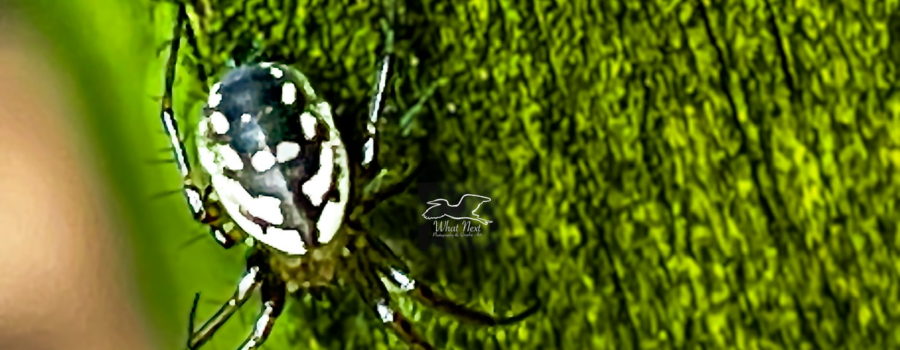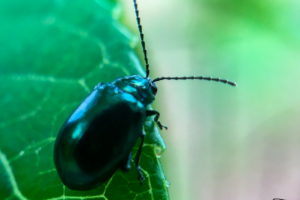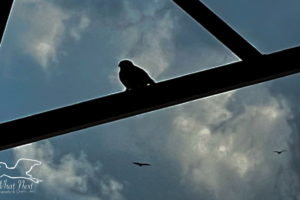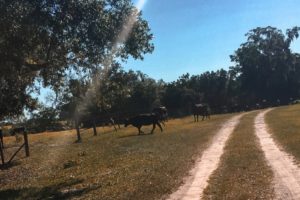The Tuft-Legged Orb Weaver is a Small, Interesting Spider.

A couple weeks ago I went out to the dog house to do a little cleaning and straightening up on a sunny Saturday afternoon. The dogs had been outside for a couple hours and were now quietly resting on the covered porches. Just as I was about to go into the dog house I caught a very slight movement out of the corner of my eye. When I looked closer, I realized that there was a very tiny spider spinning a long piece of silk between the porch rail and some vegetation. I watched it work for a couple of minutes and then decided to try to get some photos. It was so small I had a little difficulty getting the camera to focus on it at first. I took several really blurry shots and had to fiddle around with the settings and lenses to get things to work right. The bright afternoon sunlight was also problematic at first, but it allowed me to use a fast shutter speed which was helpful in the long run since this little spider was very active. Thank goodness the dogs were already worn out, so I didn’t have any ”help” with the endeavor!

The web the spider was working on was still in the beginning stages, but it looked like the typical orb shaped web that orb weavers build, so that was where I started looking for information to identify it. With a bit of research, I determined that it was a tuft-legged orb weaver (Mangora placida). Even though it’s tiny (5-7 mm), this spider is pretty interesting. Like it’s larger cousins the Mable orchard orb weaver and the spiny orb weaver, the tuft-legged orb weaver builds a basically round, intricate web that hangs vertically to trap flying and crawling insects. Since it’s so much smaller, the tuft-legged orb weaver builds a web out of much finer silk with a tighter weave allowing it capture smaller prey. The problem is that these fine threads are easily disrupted, so the tuft-legged orb weaver has developed a series of stiff hairs on its legs that allow it to move around in the web without destroying it. I’m always amazed at how nature adapts so that these animals can survive in their own unique niches.

Even though I had not seen this species before (many people never see them due to their small size and camouflaged colors), it turns out that they are pretty common in most of the United States. It can also be found in eastern Canada and in Mexico. Most sightings seem to be made in the spring, but at least down here in Florida, they are around into the early fall. They generally live in low brush at the edges of wooded areas or in clearings in the woods. They can also be found along fence lines, in brush at construction sites, and even in backyard gardens that have low growing vegetation. Even though all of these spiders have distinct brown and white markings, there is some variation in the colors with some individuals having a greenish tint and others having lighter markings.

I’m always happy to find a new species to add to my life list, so I’m glad I stuck with it when trying to shoot images of this little spider. I wouldn’t have been able to make an ID without some reasonable photos. I’m also not one to give up on something easily, and every time I find a subject difficult and figure out how to photograph it, I learn something that I can bring to other photography sessions. To me that’s one of the most exciting parts of this journey!





Recent Comments